Are you feeling stumped on how to get your students excited about learning to add and subtract decimals? Don’t worry – we’ve got some great ideas that will excite your kids when they enter your math classroom. Read on for five fun, interactive activities guaranteed to engage your students when teaching adding and subtracting decimals for 5th graders. Let’s explore each activity so you can see an increase in student engagement as soon as today!
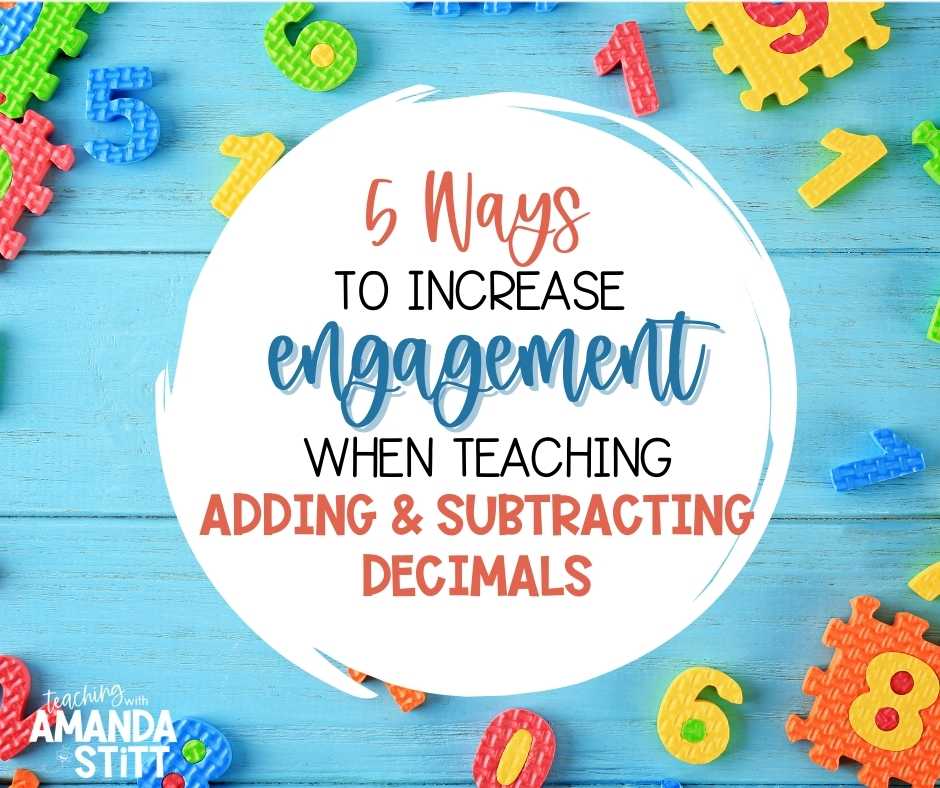
Adding and Subtracting Decimals for 5th Graders: Use Base-Ten Blocks
Do you mean those yellow or blue things the little kids use? Yes! Stay with me here…
Pull out all the flats, rods, and cubes (see the image below). A flat’s value is 1 whole, a rod’s value is 1/10, and a cube’s value is 1/100. You can provide a mat for students to lay their place value blocks on or you can use a whiteboard.
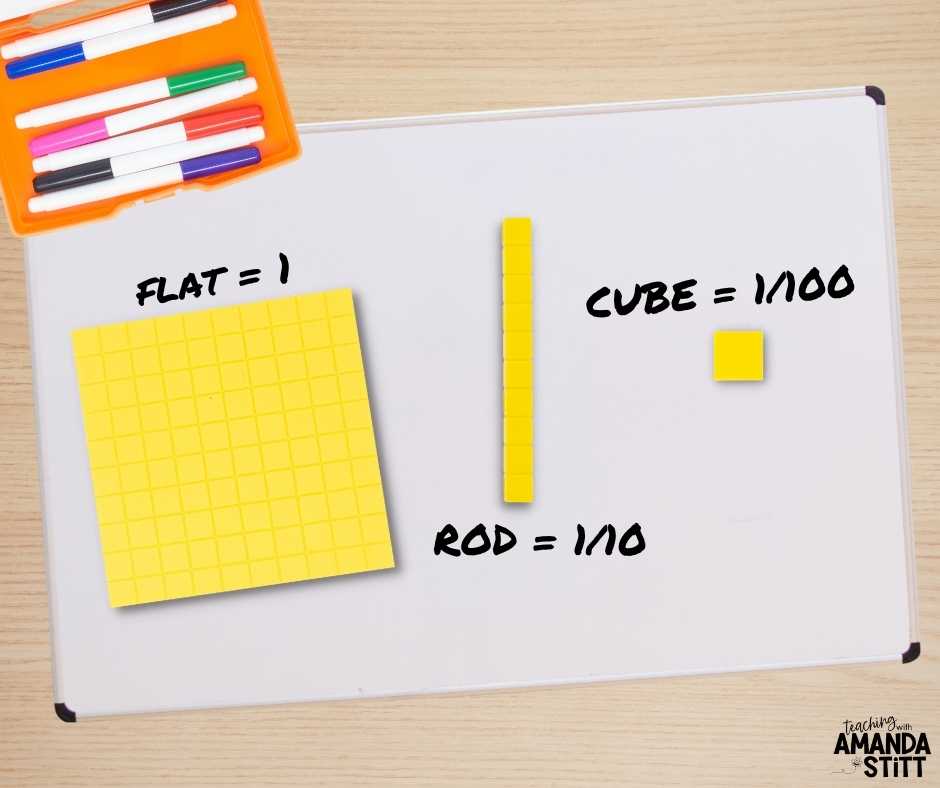
In order to teach students how to add and subtract decimals visually let’s start by modeling. First, start with practicing creating decimal numbers with base-ten blocks. Show students that the number 1.48 would have 1 flat, 4 rods, and 8 cubes. Once you feel confident that students understand the base-ten representations of a decimal number, it is time to start adding and subtracting.
Write an equation on the board. For example, you could write the equation 3.65 + 2.18. The first number built with base-ten blocks would include 3 flats, 6 rods, and 5 cubes. Then below the first base-ten blocks number create the second number. The number 2.18 would include 2 flats, 1 rod, and 8 cubes. Next, model how to combine (or add) those two numbers together. Model and draw comparisons of how you would regroup the decimal numbers just like you would with whole numbers. So in the end you would have 5 flats, 8 rods, and 3 cubes.
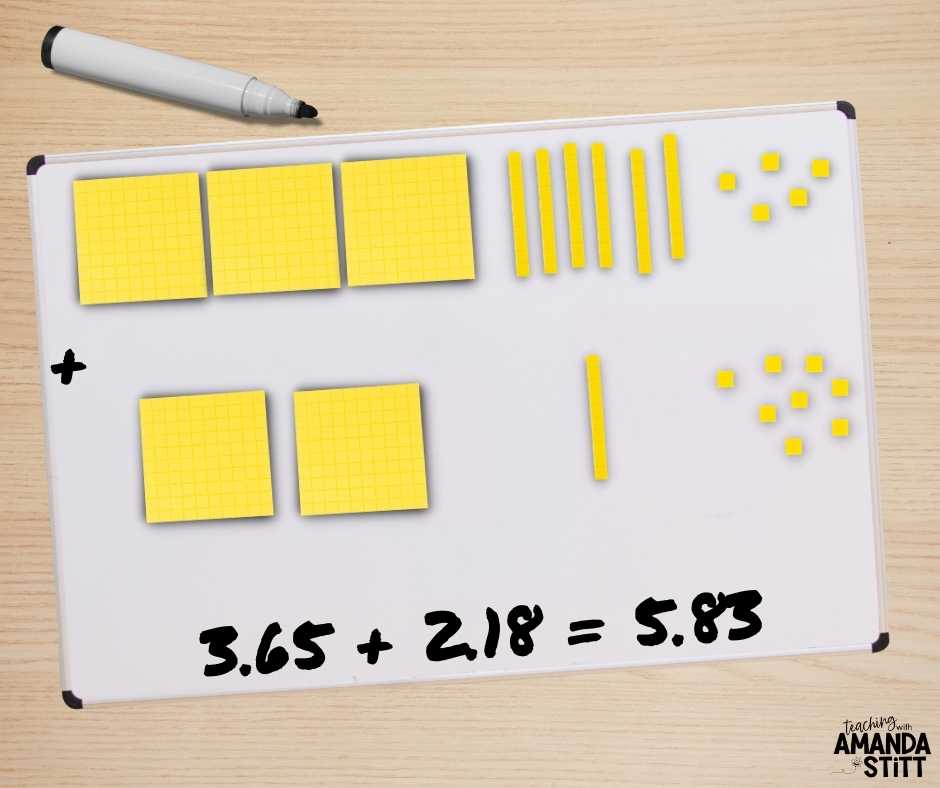
You can also use base-ten blocks to model subtracting decimals. For example, if you had the equation 4.52 – 1.26 you would start by building the number 4.52 which would include 4 flats, five rods, and 2 cubes. In order to subtract you would need to start by taking away the 6 cubes, but there are only 2 cubes available. So you would model regrouping one of the five rods into ten cubes and then take away the 6 cubes. Proceed until you have completed the problem.
After you have modeled a few examples, it is time to get your students involved! Provide them with the base-ten blocks and allow your students to start practicing.
Want to kick the lesson up a notch?! Use food instead of base-ten blocks. Graham crackers make the perfect flat, use pretzel sticks for the rods, and use any small item (marshmallows, Skittles, chocolate chips, raisins.) for the cubes. What kid wouldn’t love using food to solve math problems?
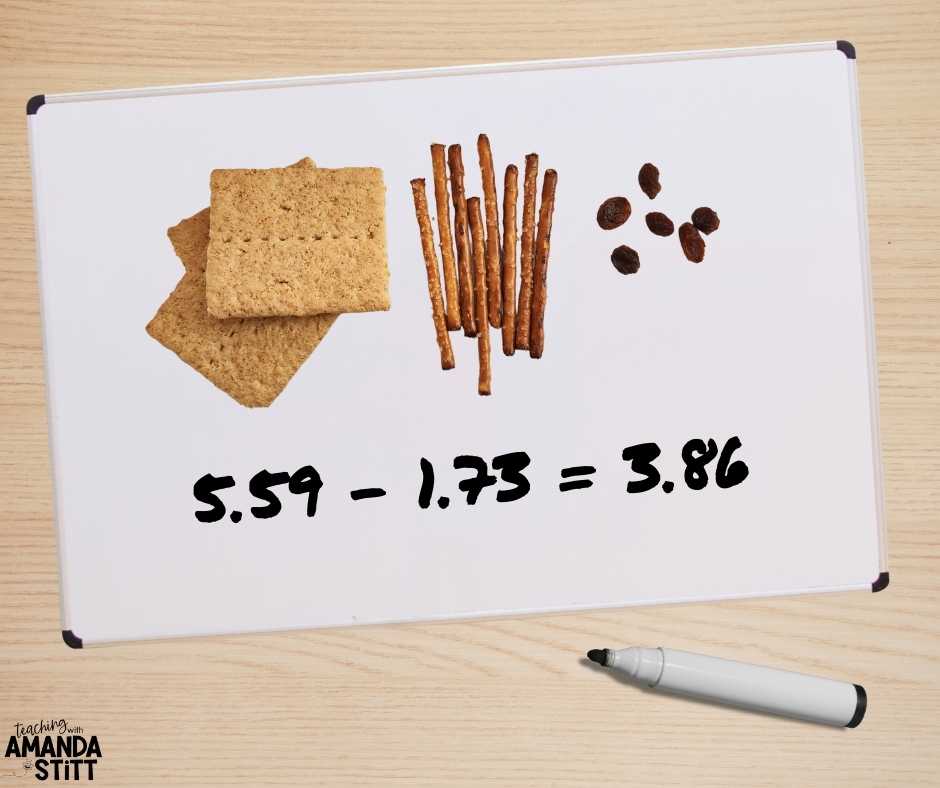
P.S. Using this base-ten strategy to teach adding and subtracting decimals for 5th graders is a great way to incorporate differentiation into your classroom.
Adding and Subtracting Decimals for 5th Graders: Provide Real-World Practice
How many times have you been asked… “Why do I need to learn this?” To be fair, we all ask this question about a lot of things we do. We remember the things that we need to use in our daily lives. So, try providing examples that the students can relate to.
Real-world application is critical when teaching math skills. Provide many examples of adding and subtracting decimals being used in everyday life and how to use them (i.e. using money, using measurements, etc.). Then provide practice opportunities within context. But how?
My personal favorite is math projects. They allow students meaningful practice within a real-world context. Interested in trying it out? Use this FREE mini math project as a way to provide students with an engaging real-world context while they practice adding and subtracting decimals. Grab your free project here!
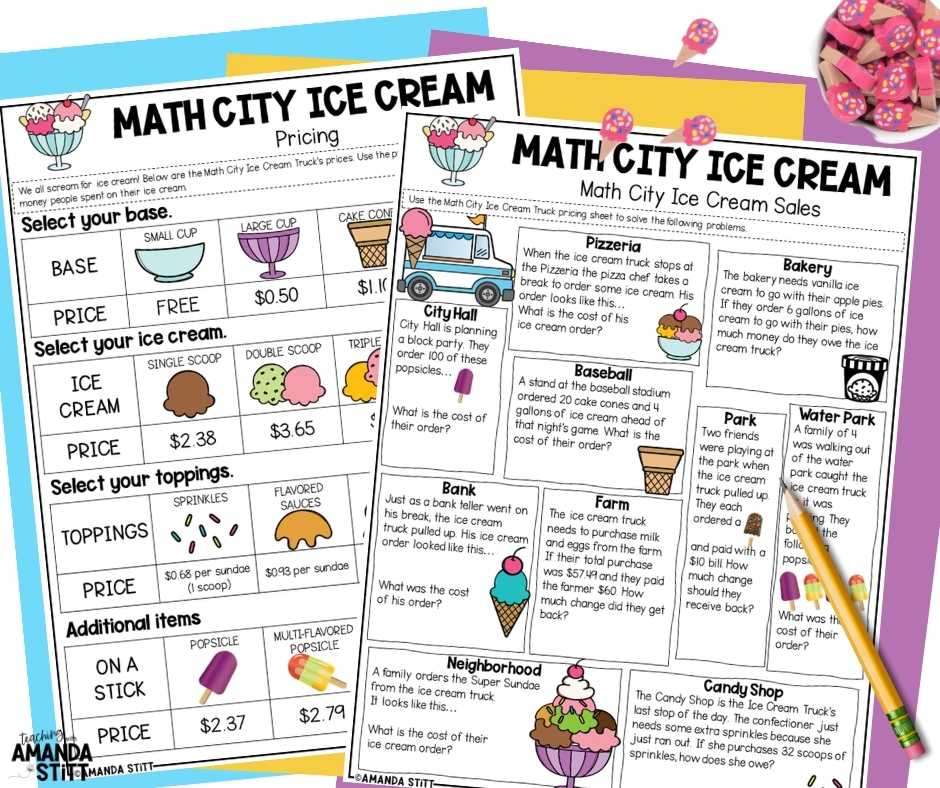
Adding and Subtracting Decimals for 5th Graders: Decimals Puzzle
An important aspect of teaching adding and subtracting decimals is getting students to consistently remember to line up the decimal points and then add. While we frequently take the drill-and-kill method, math guru Marilyn Burns has a powerful and engaging activity that she uses to teach students the importance of lining up decimal points.
Decimal Puzzles! To create a decimal puzzle, start by writing a whole number equation on the board horizontally. For example 245 + 19 + 8 = 272. Discuss with students how they know that 272 would be a reasonable answer for that equation.
Next, underneath the first problem write the equation 245 + 19 + 8 = 3.44 and have a similar discussion with your students. Is 3.44 a reasonable answer for that equation?
Now the fun part! Tell your students that someone erased the decimal points in the equation and they need to solve the puzzle by figuring out where to place the decimal points in each number. Work together to find where the decimal points belong then write the equation vertically, with the decimal points lined up, to show students why lining up the decimal points is important.
Once you’ve created and modeled a few puzzles, set your students free to create their own puzzles. The challenge in this activity will engage your students while stressing the importance of lining up the decimal points when adding and subtracting decimal numbers.
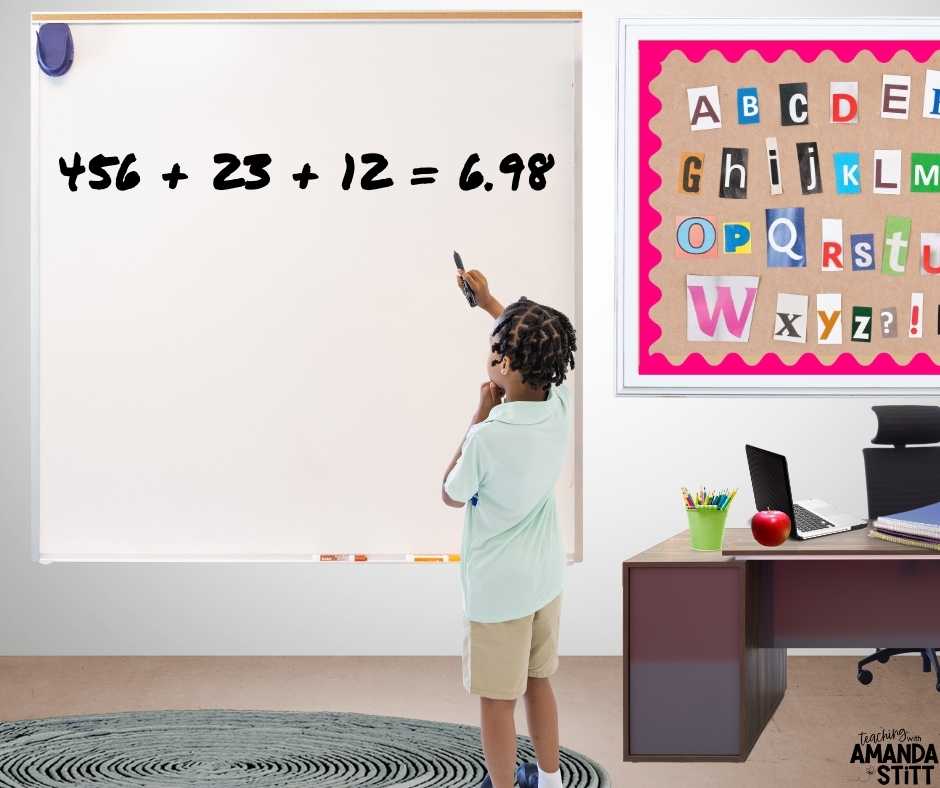
Adding and Subtracting Decimals for 5th Graders: Use Some Music!
Here’s another memorable way to help students remember to line up their decimal points when adding and subtracting decimal numbers.
Adding and Subtracting Decimals for 5th Graders: Spice Up the Practice Activities
We all know that students need practice when learning a new skill, but who said that practice needs to be boring?!
One of my favorite ways to add engagement to practice activities is with art. Math Pictures are always a hit. Here’s how they work…
Provide students with a list of items they need to draw in a scene, but don’t provide them with the quantity amounts. Instead, give your students an addition or subtraction problem they need to solve in order to discover the number of items they need to draw. For example, if the picture was a camping scene you might say, “Draw 3.23 + .77 camping chairs”. Students would need to solve that equation before they draw the items. Your students will be engaged as they work to solve the equations and create their own math picture masterpieces.
Added bonus of this activity… you have a fun and easy bulletin board display!
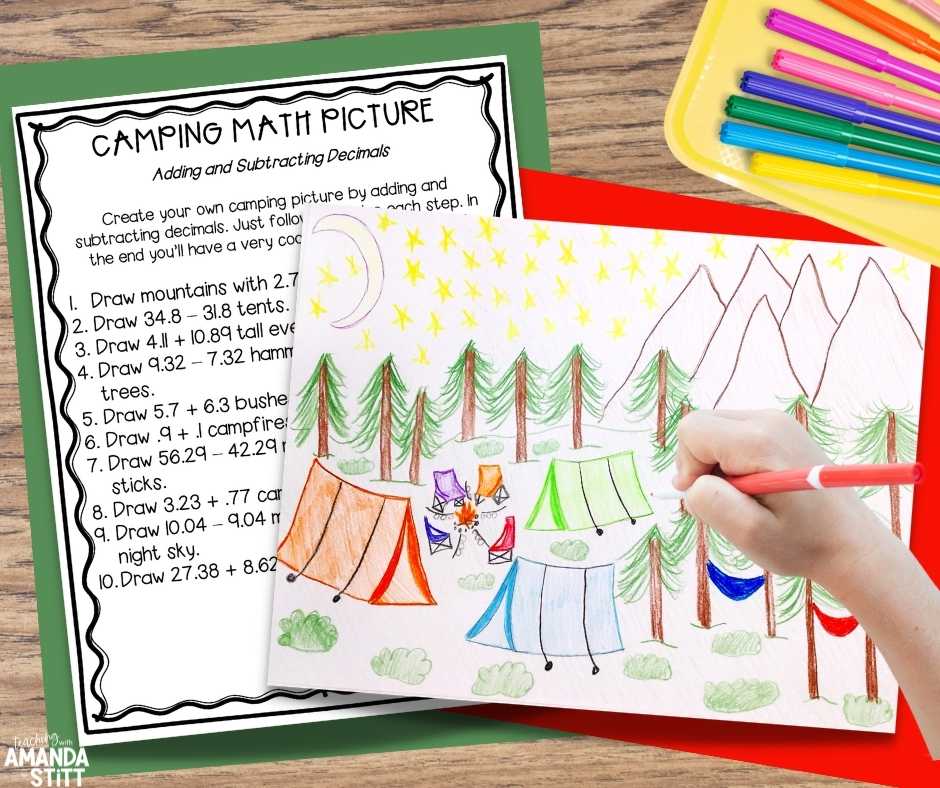
Adding and subtracting decimals for 5th graders doesn’t have to be boring! With these engaging activities, your students will have fun as they learn the important skill of adding and subtracting decimals. Give them a try today!
Happy decimaling! 🙂


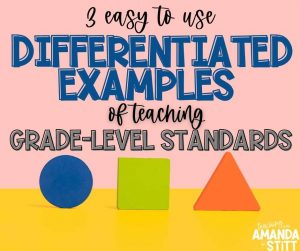
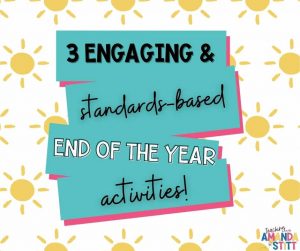


No Comments